"Images of Light" with magic, art & science: Re-educating the public in holography, light and vision
2019-09-10SergeyStafeevAndreasSarakinosElenaBobritskayaAlkiviadisLembessisDaniilSharovTatianaIpatova
Sergey Stafeev Andreas Sarakinos Elena Bobritskaya Alkiviadis Lembessis Daniil Sharov Tatiana Ipatova
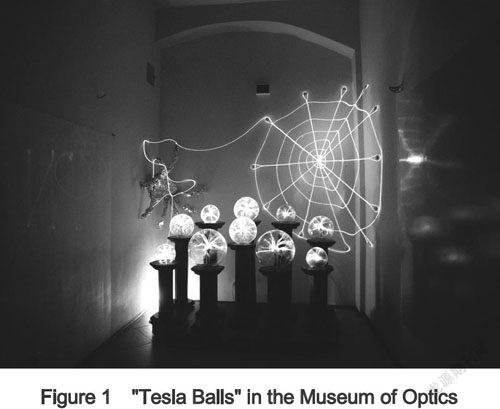
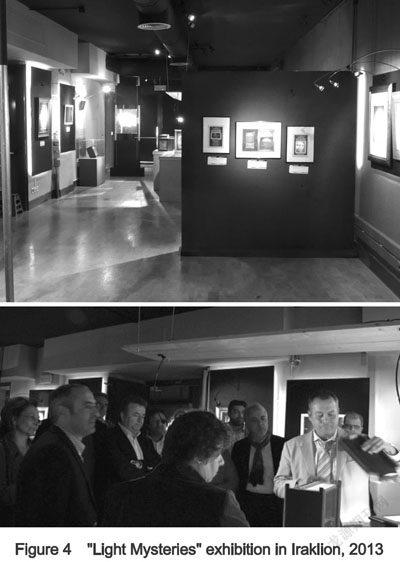
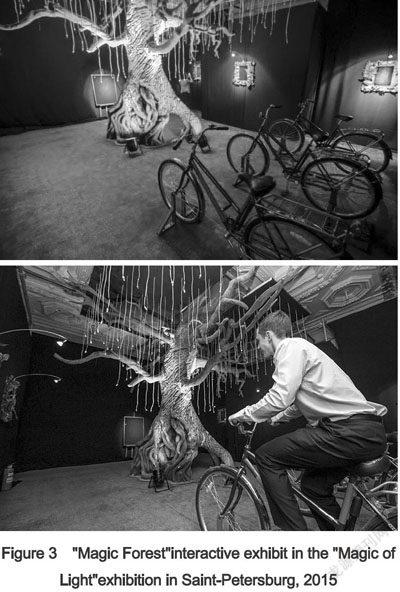



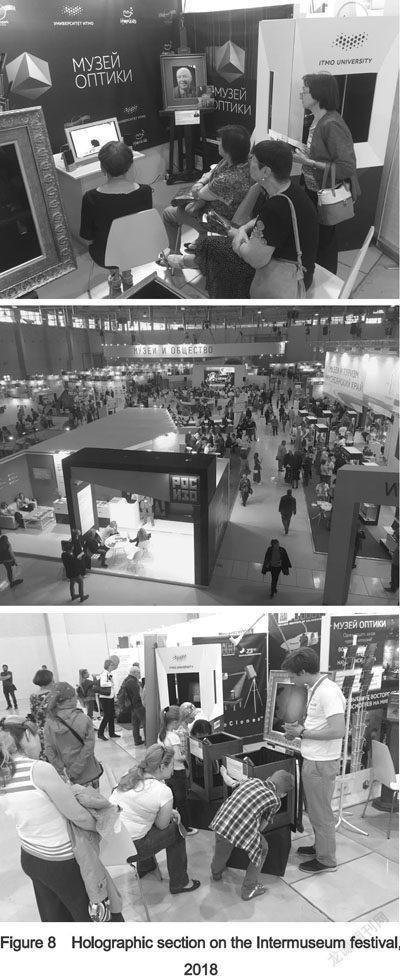
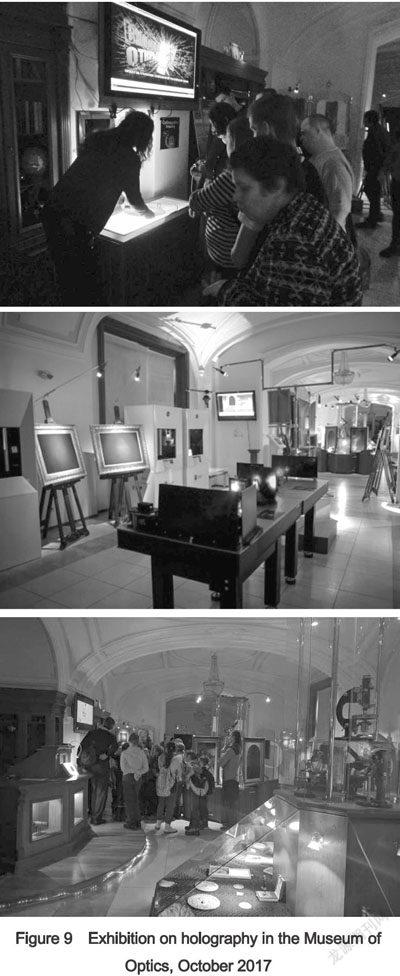
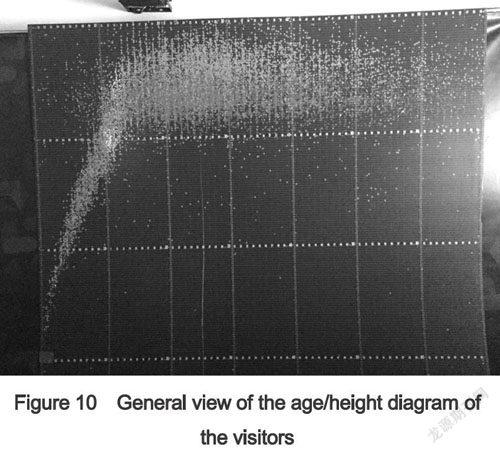
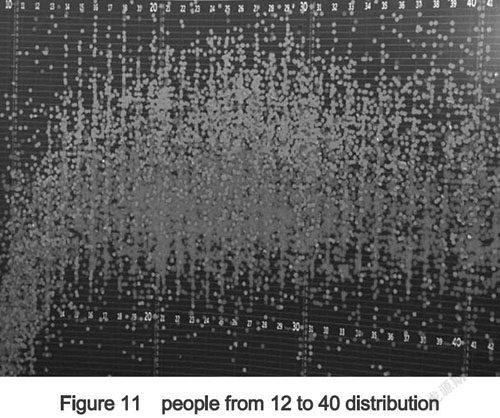

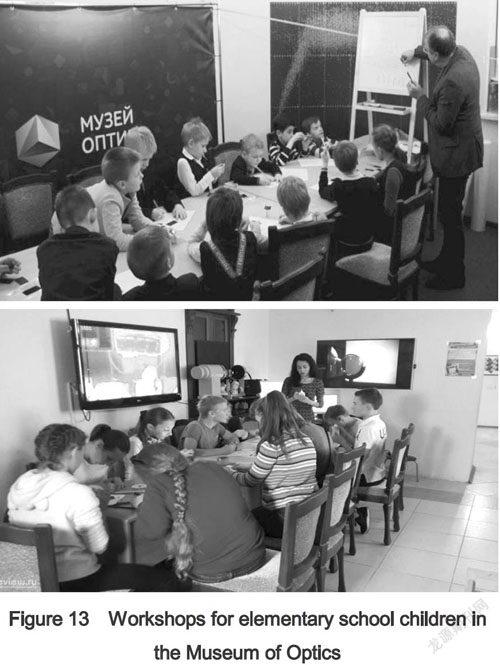
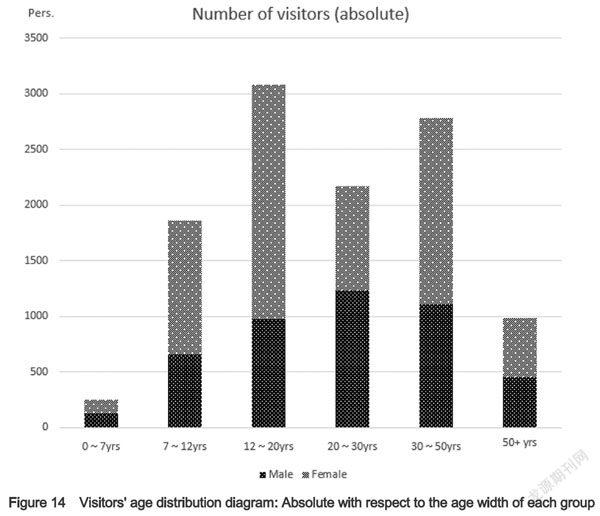

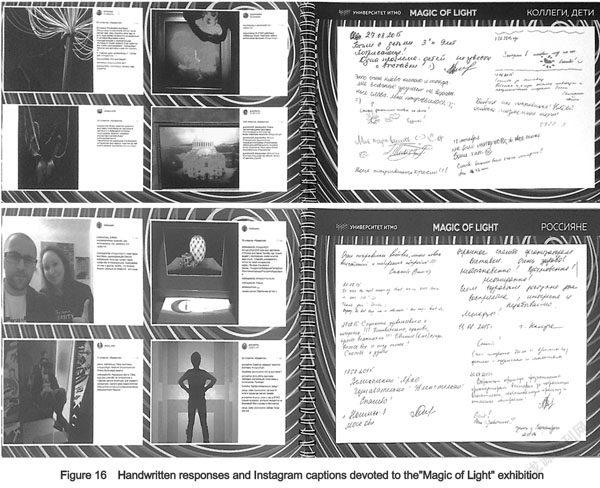
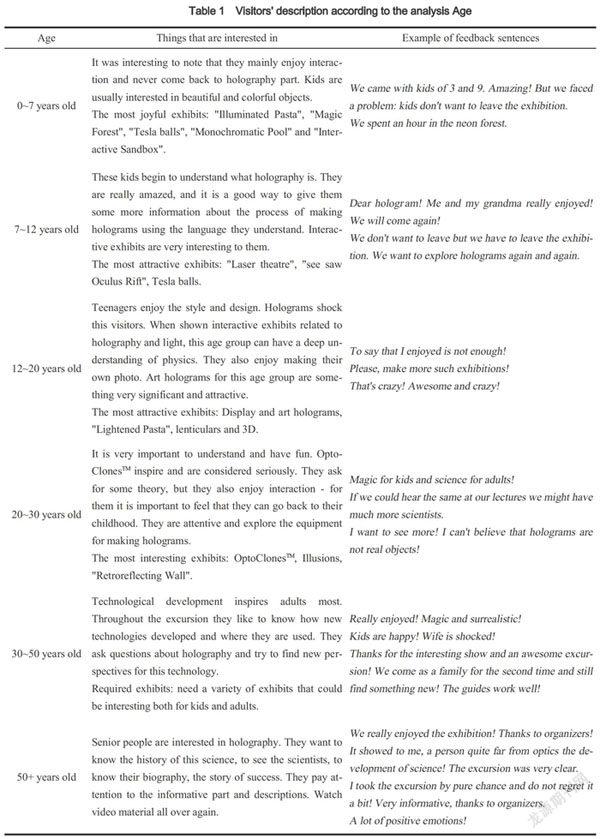
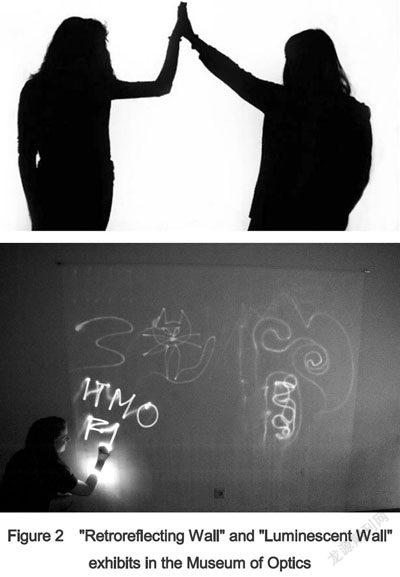
Abstract A renewed concept of a display exhibition in holography is presented. Such expositions organized by the Hellenic Institute of Holography and Saint-Petersburg ITMO University have been selected as examples of the new concept. Statistical data on the numbers of visitors, their age and their feedback has been analyzed. STEAM (science, technology, engineering, art, mathematics) methods have shown their efficiency for motivating students and re-educating the general public in areas of focused interest.
Keywords Art and science, science communication, holography, interactive exhibition, cognitive visualization, STEAM education
0〓Introduction
Scientific thinking has been developing over time into structured knowledge constantly bringing in new properties, principles, laws and concepts. Classification has resulted in a complex structure which cannot be assimilated as it is but instead has to be gradually taught. In turn, this is becoming a challenge as knowledge is to be transferred to more and more people. Thus, multiple schools of thought appeared in various areas.
Optics is a science which existed as a separate branch as early as in ancient Greece and Rome, and has widely developed ever since. "The appearance of antique optics can be seen it the works of Archytas and it comes to its peak in the works of Euclid and Ptolemy. Archimedes, Hero, Diocles and Theophrastus also were significant thinkers."[1] Optics has always been related to something that humans can witness through their vision and therefore this is why it was born very early as a branch of science. It also allows the combination of both visual and theoretical aspects because concepts can be proved. Throughout the centuries new and more sophisticated ideas were included in optics. Nowadays it looks just as most other sciences. However, the visible element remains its great advantage.
Education has much evolved during the past decades. For instance, alongside regular classes and conventional lectures, we can now see innovative methods of education: the educational process may include online courses administered through web pages of your browser or mobile phone applications in STEM-based classes which allow to master sciences together with technologies, engineering and mathematics. Such methods are used for education of adults as well.
However, there is another way to propagate scientific knowledge to general public, namely, through scientific shows and exhibitions. There are various exhibition concepts that can be implemented by the organizers of such events. These can be broadly classified into two groups: interactive and not interactive. Interactive techniques can be further based on a method of edutainment which motivates people to explore science through some kind of amusing interaction. This can be specifically appropriate for optical shows as visualization can be implemented.
The interactive shows "Light Mysteries" and "Magic of Light" were based on this interaction of the visitors with the state-of-the-art innovations in visualization and light. These shows have holography as their core element and most of the exhibits are in some way related to holography. The purpose of this article is to show the benefits and advantages of the methods used in these shows and it describes the basic underlying principles of the shows as well as an assessment of the results.
1 From STEM to STEAM via holography
Over the past 20 years, interest in STEM education has been growing all over the world. It has been widely recognized that science education, instead of being focused exclusively on future scientists or engineers, should equally be diffused to the majority of young people and adults resulting in science-aware citizens able to cope with the complex challenges of modern technological societies and economic growth. In addition to STEM, a new initiative, STEAM, that is STEM plus arts, has been adopted in many educational systems as arts can definitely assist to the critical process of creativity and innovation combining rational thinking with the intuitive and inspirational approach of art in a very effective method of science communication. In view of these new principles of education, we consider "holography" as a valuable STEM/STEAM tool, as its theory and practice encompass and transverse most major fields of the disciplines involved.
The series of interactive shows "Images of Light", under various marketing names, aims to trigger the interest of young people and adults in STEAM by exploring the properties of light and human vision through their relation to holography and stereoscopy and vice versa. In their implementation, various tools of communication are used for the introduction of optical phenomena to non-scientific visitors of various age groups and, through the raise of public interest in science and general inquisitiveness, evolves a new type of educational process.
Conventional holographic shows normally consist of analog and digital holograms, artistic holographic installations, multi-channel holograms and other parts. This approach is useful for a first introduction or a broader exposure to holography but cannot provide a deeper understanding of its essence. Combining holography display with demonstrations of other optical phenomena in one show guarantees a more elaborate and educative interactive involvement of visitors. In this case, holography becomes the key core technique for the explanation of various phenomena of wave optics, such as interference, diffraction, and polarization.
Moreover, in addition to direct artistic expression with the use of holography as a medium, display holography indirectly connects art and science, for instance, in the case of optical clones of original historical artworks or of holograms depicting a cognitive visualization of scientific principles and information.
2〓Role of guides for the show
When conceiving a show, it is very important to let a person go through and explore it. The visitor can either explore it on his own or in a tour with a specially trained guide. According to our experience, most visitors are interested in getting into rather complex things related to holography (that is, the process of producing a hologram), therefore, a guide service becomes necessary. It is important for an exhibition to communicate the general concept to a visitor in a proper manner. A leaflet cannot contain information that would be appropriate for every person, an audio guide and QR codes that can be placed near exhibits have the same drawback. However, guide service allows to prepare a method of giving different exhibit descriptions to different age groups. A talk appears to be the most effective way of communication, and this has been proved by numerous feedback reports in the Optics Museum of ITMO University in St. Petersburg.
The designated guide can instantly observe the visitor's reaction and change the style, speed and language of the tour. In this way, questions can also be addressed just as they arise during the tour. Another important advantage of providing guide service is that it makes the show "alive" and more interesting.
For all these reasons, our shows employ specially trained guides who will learn the basic principles first and then ask specialists about some specific cases. The selection process is very important because the guide has to have both theoretical knowledge of the subject and communicative skills as well as linguistic fluency in order to attract the visitors. For the Museum of Optics of ITMO University and within the "Images of Light" shows we have found young people of the same age as visiting students to be the best guides. This can be attributed to their motivation for learning, interest and openness in communication. This effect is measured by a system of "likes" which allows visitors to rate the guide by giving a "like" card.
3〓History of 3D and true holography
There are many misconceptions and biases around the things that we cannot touch or feel. This can be clearly seen from the public views on holography. Mass media and big companies often use the term "hologram" in order to refer to the various techniques which have no relation or even reference to holograms. This is why people tend to wrongly consider holograms as lenticulars[2], Pepper's ghost setup, mirror mirages, holho constructions and other various kinds of projections[3]. In order to eliminate those misconceptions, visitors are invited to see a retrospective and various types of 3D techniques. Thus, in our shows we set a sequence of the following objects: stereoscopes, anaglyphs, chromadepths, lenticulars, "scratch-holograms" and various pseudo-holographic projection systems. This is our adopted approach in practice and we consider it to be a very effective method for helping people realize what really is holography and what is not. These exhibits allow the guide to visually show the difference between holographic and non-holographic methods of 3D visualization.
Besides static objects, the exhibitions include demonstrations of short 3D videos on anaglyph, lenticular and polarized 3D displays. When running a 3D movie, the guide can explain the basic principles of the technology. The same is with the animated 3D "holho" setup that is often called holographic. In terms of spatial allocation within an exhibition, this part of the exhibition with various 3D exhibits can come either before or after the strictly holographic part.
In order to further elaborate in the holographic origination technique, we demonstrate various optical setups illustrating hologram recording processes. In practice, this results in two holographic setups used in the Museum of Optics: Leith's and Denisyuk's. The differences and the similarities of these two setups are very important to demonstrate for explaining holography, lasers, interference, diffraction and other associated phenomena.
In parallel with demonstrating hardware holographic setups, the Museum of Optics shows animated movies on Holography and Lasers custom-produced by a professional Russian video studio using original content. The material contains some basic information, and the guide is available for answering the visitors' questions about more specific matters. These movies have been very popular among the visitors in each show.
4〓From mirrors and gratings to holography
Holography itself is the highest point of wave optics. It cannot be implemented without some basic knowledge. If we want to go beyond showing holograms and to explain the nature of these "magic images", we need some complementary exhibits that help explain the basics of optics. First of all, we suggest including some geometrical optical elements in the show such as lenses, prisms and various mirrors(i.e. ancient bronze, modern adaptive mirrors and even Chinese "magic" mirrors).
Secondly, a demonstration of interference phenomena is essential. The easiest way to show it is through dynamic Moire patterns that can be made interactive. Also, we use double pulse holograms with "frozen" interference patterns (i.e. well-known holograms with deformed surfaces, or the flows of heated air around electric bulb). Some of our exhibitions included demonstrating classical interference (e.g. Young's double-slit experiment and Fresnel's bi-prisms) for any visitors that would be interested. Interactive models of Mach-Zehnder and Michelson interferometers are used in the exhibition to demonstrate the applications of interference.
Thirdly, we explain diffraction principles by using a wide range of diffraction gratings: transmissive, reflective, echelette, etc. Showing laser beam diffraction on the opaque round disc, so called Poisson spot, is always very spectacular to visitors. Special attention is payed to spectral properties of diffraction gratings because this leads to a discussion on the color components of white light. This conversation is continued in the interactive monochromatic room and near the dedicated wall with colorful shadows. The latter is one of the most attractive photo zones of the museum and exhibitions.
This approach of using exhibits describing each of the principles in addition to content directly related to the concept of holography has been proven very efficient.
5〓Interact rather than observe
A proverb goes: "Tell me and I will forget, show me and I may remember, involve me and I will understand". This is why we encourage people to interact with the exhibition rather than just observe. Visitors are supposed to be active throughout the exhibition so that they may have a better understanding and a deeper lasting impression. The interactive part of the exhibition allows to involve the emotional component into the process of thinking and understanding of holography and various properties of light. This corresponds the STEAM methods where Art-component adds to the rational knowledge.
The interaction with a holographic exhibit is achieved by using moving lights, holding the holograms in hands and comparing it with a real object. Also suggesting to the visitor to move within the three dimensional space where the holographic image is visible adds to the interactive involvement. These interactions are basic and attractive to the visitor. For instance, a special artistic exhibit consisting of a patchwork of many hologram pieces has been created as a human figure statue rotating on a turntable. The visitors use their phone torches and try to find the hidden images. For this, they have to find the right direction of light and the angle of view.
The plasma "Tesla Balls" (Figure 1) glow in the so-called "mysterious" form. The light in these balls can be controlled. During the guide's explanations about the properties of plasma, visitors can interact with this exhibit and immediately see the effect. Pictures on the retroreflecting and luminescent walls (Figure 2) produce an impression on the visitor and form a positive opinion about the exhibition in general. These exhibits allow visitors to draw with the torch of their mobile phones and to "freeze" people shadows.
[Figure 1 "Tesla Balls" in the Museum of Optics]<O:\Macfile-f\CY\2019年\科學教育与博物馆\2019-2\光-1.tif>
One more emotional component is music (it is used as a background in some parts of exhibitions). Also, special interactive musical exhibits have been created (e.g. laser harp, LED spectrum analyzer, colored musical glass organ, etc.).
One of the most interesting and effective STEAM exhibits has been the "Magic Forest" (Figure 3), where all of the above mentioned interactive examples come together. It is the example of an exhibit that combines interaction (a person should pedal in order to see the effect), the visual element (the artificial tree or the holograms are illuminated as the person pedals), the theoretical knowledge (holograms require light in order to be seen and that light is produced from the physical force applied) and art (in all this scenography) which immerse a person to a "fairytale" experience.
6〓Our international exhibitions
It has already been mentioned that exhibitions based on STEAM principles are successful all over the world. Here are some examples of our experience in arranging such exhibitions.
6.1〓"Light Mysteries" exhibition (Crete, Iraklion, Natural History Museum, 2013-2014)
This pilot exhibition took place for the first time in Greece (Figure 4). The aim of this show was to provide explanations of various natural phenomena, the latest developments in the field of stereoscopic 3D-imaging and applications for visitors of any age and background.[4] Exhibition duration: 18 months. Approximate number of visitors: 50 000.
6.2〓"Magic of Light" exhibition (Saint-Petersburg, Eliseev's Palace, 2015)
A first Russian interactive exhibition on holography took place in Eliseev palace (Figure 5) and was devoted to the famous Russian scientist Y.N. Denisyuk. The exhibition presented the masterpieces of worldwide known holographers and the series OptoClonesTM of Faberge Easter imperial eggs. Exhibition duration: 5 months. Approximate number of visitors: more than 80 000.
6.3〓"Magic of Light" exhibition (Moscow, Saltykov-Chertkov Mansion, 2016)
The second exhibition "Magic of Light" took place in Moscow (Figure 6) and was an updated copy of the exhibition of 2015. The exhibition took place in the center of Moscow at the same time as that of "Alice through the Looking-Glass". Some new installations were specially prepared for it (e.g. a cave of holographic monsters, a portrait gallery, and an extended VR section). Exhibition duration: 3.5 months. Approximate number of visitors: 40 000.
6.4〓Holographic exhibition (Kremlin, St. Andrew's Hall, October 2017)
The exhibition was devoted to the anniversary of the Gokhran (the Treasury) of Russia (Figure 7). The new OptoClonesTM of the imperial treasures of the Diamond Fund of Russia were demonstrated. The exhibition was attended by the Prime Minister of Russia Dmitry Medvedev, the Minister of Finance and the delegation of world top jewelry experts.
6.5〓Holographic section at the Intermuseum festival (Moscow, VDNKh, 2018)
The Annual international festival of museums took place in June 2018 at the VDNKh (Figure 8) the major exhibition center in Russia. A special setup was created, and visitors were likely to see the OptoClonesTM, digital holograms and Y.N. Denisyuk's holo-portrait. During the exhibition, the opportunities of display holography were presented in the section of the Russian Union of Restorers. Exhibition duration: 4 days. Approximate number of the booth visitors: 1 000.
6.6〓The Museum of Optics (Saint-Petersburg, Eliseev mansion, 2008)
The Museum of Optics is located in the center of Saint-Petersburg, in Eliseev mansion (Figure 9) in the Technopark of ITMO University. The museum takes up the area of 450 square meters and is divided into 11 sections. The holography part takes up 200 square meters. The rest of the area belongs to the following sections: 3D technologies, UV and IR light, interactive exhibits, optical illusions. During the 10 years the Museum was visited by more than 500 000 people who enjoyed this experience. At the same time, the Museum is used as a benchmark for testing the technical development of new exhibits and their functional appreciation by visiting public.
7〓Visitors and feedback overview
It is far from obvious that to measure the success and the effect of any exhibition in just the number of visitors is an insufficient indicator, especially when the effect is related to cognitive knowledge. This requires a more detailed and complex approach. Some modern methods of evaluating the impact require involving experts (i.e. science communicators) and the experience of many exhibition designers. However, basic evaluation appears to be still feasible with less resources in time or people by using either digital media or interactive "voting" methods. In the case of the "Magic of Light" exhibition the data was collected using two instruments.
The first one was the age/height diagram (Figure 10). During the 5 months of the "Magic of Light" exhibition in 2015, this diagram was placed in the exhibition space, and every visitor was able to join the analysis and mark their height and age with male/female dots. It was not mandatory, and according to the estimation, only 1/8 of all visitors participated in the analysis.
Digitized data from the diagram was analyzed. The overall number of visitors, according to digital data, equals 10 150, and more than 8 000 were defined as the target visitors (people from 12 to 40, Figure 11). The information on the number of visitors and their age allowed us to classify them into 6 groups as follows:
[Figure 11〓people from 12 to 40 distribution]<O:\Macfile-f\CY\2019年\科學教育与博物馆\2019-2\光-11.tif>
(1) 0~7 years old. These visitors are brought to the exhibition by parents only and makes up 2.5% of overall visitors. Specially for kids we included an interactive sandbox and an indoor playground ball pool (Figure 12). In keeping with the goals of our museum, the pool illumination is variable and monochromatic. The balls were changing their colors in front of the fascinated kids.
(2) 7~12 years old. We have highlighted this group because on the one hand, starting from the age of 7, kids begin to show their interest in holography and on the other hand, this age group is not considered as our target visitors yet, because 5th and 6th grades (12~13 age) is critical for children's motivation in natural sciences[5]. This age group accounts for more than 10% of overall visitors and half of them still come with their parents, but the other half visit the exhibition in school groups with teachers. In order to prepare them for their future visits, some special activities are provided for this group by our museum (Figure 13).
(3) 12~20 years old. This is the basic group of the museum's target visitors, and it accounts for more than 30% of the all. This group includes middle and high school as well as freshmen and sophomore students. For them, some special scenarios of the excursion are prepared. They mainly come in groups but show very different motivation towards learning: some are crazy about having fun and others are more patient and more motivated towards learning. This does not only depend on age but also on the organization of the visit, too. After 10 years of work we can predict the class behavior by even looking at the name of the school.
(4) 20~30 years old. This is another group that represents our target visitors and its relative proportion in the overall visitors is about 20%. This age group shows a big interest in holographic technologies, both related to display and digital holography. People of this age ask the biggest number of questions and the longest excursions are made specifically for them. It might be related to their interest in applying holography in their professional area. People of this age group usually come with their friends and make a lot of selfies.
(5) 30~50 years old. This is a family category and it is very important for us, because they are likely to come with kids. This age group increases if every family member can be satisfied with the exhibition content. This age group accounts for more than 25%, and this proves that both kids and adults find some interesting content at the exhibition. This group likes to attend lectures that take place in the museum apart from excursions (e.g. "History of holography", "Art and science", "Optical illusions").
(6) 50+ years old. The guides claim that people of this age group (about 9% of overall visitors) are the most thankful ones: they listen, be engaged and enjoy excursions. There were a lot of cases when some "babushka" (old ladies) groups were staying for more than 2 to 3 hours in the holographic part and were observing and exploring each of the exhibits.
The selected groups represent various groups of people who joined the age-height diagram. The suggestion we make concerning the diagram is that the participants are mostly the interested people of the overall visitors. Figure 14 demonstrates the absolute amount of all group's participants. The group that contains the highest amount of ages is the fourth in our division (30~50 years old). In the figure a distinct second peak is visible in this age category. In order to receive smoother and more balanced graphic we normalize each category's age to an average period of 10 years. The result of the normalization is given in Figure 15. The only peak is now corresponding the target visitors of the museum. The overall percentage of visitors in the target visitors and the two closest categories is almost 65%. This number proofs that the exposition itself has a correct focus on the attraction of young people and the relevant style of the provided educational program.
The second instrument of the analysis was the feedback of the "Magic of Light" exhibition's visitors. This information was collected in three ways: handwritten and Instagram reviews (Figure 16) and "like" system which was mentioned above. The analysis of texts collected and classified allowed us to describe the features of each of the age groups (Table 1).
8〓Conclusion
Using examples of a series of the STEAM-based interactive exhibitions under the title of "Images of Light", it has been shown that holography is a very useful tool for adding art component into the core of exhibition. Using such a component the STEAM-based exhibitions become attractive and lively not only because of the educational element, but also because of emotions. In this "Light Alive" concept of exhibitions, holography is the factor that unites STEM and Art, thus making it a STEAM exhibition.
If we want to create a holographic exhibition that is interesting for all age groups and motivates young people for studying optics and holography, it is necessary to arrange excursions and to prepare young and competent staff. This is also the way for the commercial success for such exhibitions.
Because of an excessive use of word "holography", it is very important to include different methods of 3D visualization and pseudo-holographic installations in the exhibition to make people wonder what real holography is.
Since holography is the peak of wave optics, the explanation of its basic principles (assuming it is necessary) has to go via showing classical optical demonstrations. This can be made with interactive and edutainment approach.
Though the exhibition has to extend beyond simply observable holograms, it is better to be interactive even in its holographic part where holograms may be "re-played" with by changing illumination, the colors and direction of light, mixing holography with other technologies, and using other tools.
Our experience shows that by following the given concepts, even relatively small holographic exhibitions can become as popular as huge museums expositions. Based on the fact that our holography-related activities have attracted over 500 000 people, this does not seem as far-reached imagination.
Reference
[1]Stafeev Sergey, Tomilin Maxim. Five thousand years of optics: Antiquity[M]. Saint-Petersburg: Format Publishing, 2010: 53-106.
[2]Holliman Nicolas S., Dodgson Neil A., Favalora Gregg E., Pockett Lachlan. Three-Dimensional displays: A review and applications analysis[J]. IEEE Transactions on Broadcasting, 2011(2): 362-371.
[3]David Szondy. Holho turns your tablet or smartphone into a 3D projector[EB/OL]. (2018-04-01). https://newatlas.com/holho-smarphone-3d-projector/28645/.
[4]Lembessis Alk.Light mysteries. Hellenic Institute of Holography[EB/OL]. (2018-04-01).http://www.hih.org.gr/en/projects/exhibitions/lightalive-2014.html.
[5]Bathgate Meghan, Schunn Christian, Correnti Richard. Children's motivation toward science across contexts, manner of interaction, and topic[J]. Science Education. 2014(2):189-215.
魔术、艺术与科学相融合的光之影像:全息摄影、光与视觉的公众再教育研究//Sergey Stafeev, Andreas Sarakinos, Elena Bobritskaya, Alkiviadis Lembessis, Daniil Sharov, Tatiana Ipatova
第一作者单位:俄罗斯圣彼得堡国立资讯科技机械与光学大学
摘 要:作者提出了一种全新的全息摄影展陈理念,而由希腊全息技术研究所与俄罗斯圣彼得堡国立资讯科技机械与光学大学组织的展览正是诠释这种理念的极佳实例。其中,观众的数量、年龄段和参观反馈等一系列统计数据都得到了分析。在一些聚焦的兴趣领域里,STEAM(科学、技术、工程、艺术与数学)这一方法能高效地调动学生的积极性,并对公众进行再教育。
关键词:艺术与科学 科学传播 全息摄影 交互式展览 认知可視化 STEAM教育
